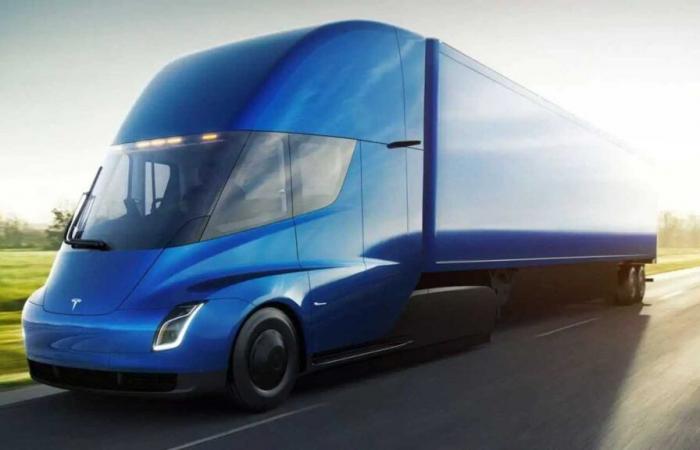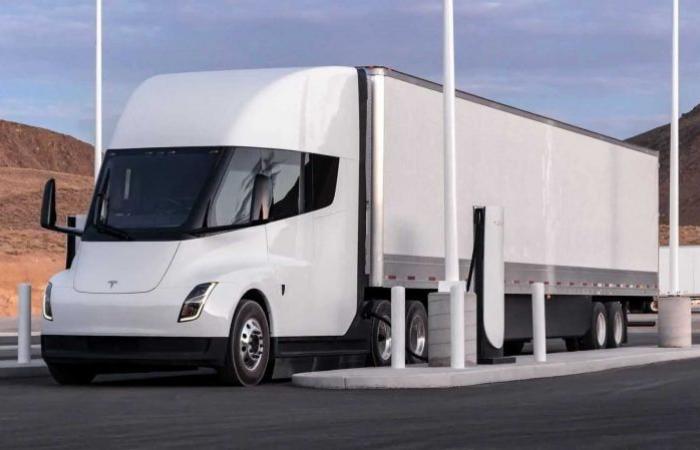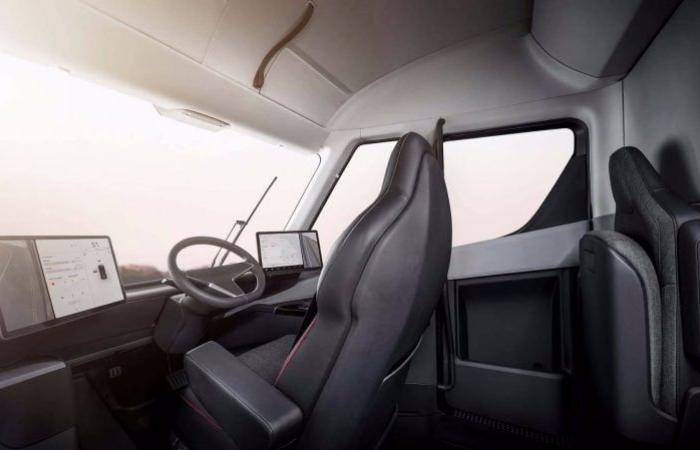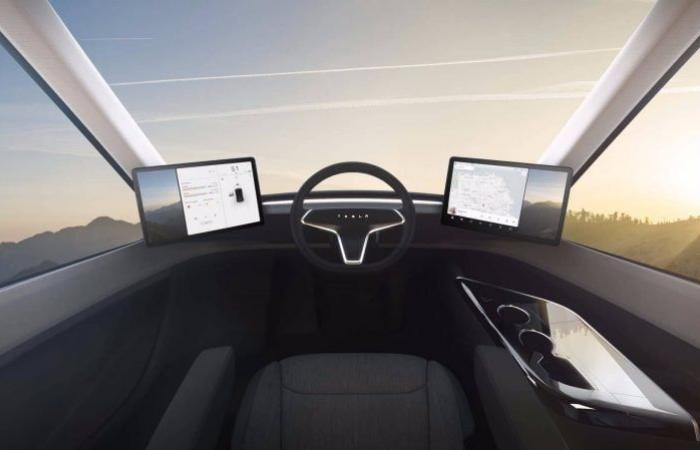After several years of waiting, delays and promises pushed, Tesla’s electric truck, the semi, finally seems to become an industrial reality. In any case, this is what the last official announcement of Elon Musk, broadcast via the manufacturer’s YouTube channel, suggests.
An ambitious project launched in 2017
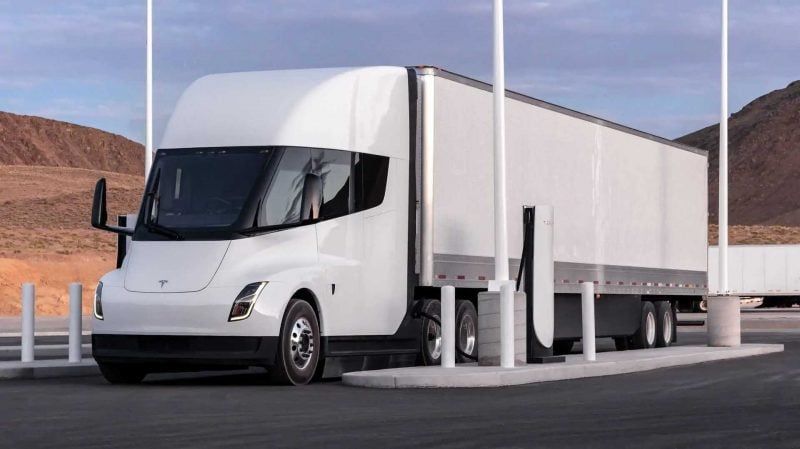
Presented for the first time in 2017, the Tesla Semi had immediately aroused the interest of many large companies, seduced by its promises of impressive autonomy and reduction of the carbon footprint.
Among the first customers: Pepsico, DHL, UPS, or Walmart Canada. Initially planned for marketing in 2022, the project, however, accumulated delays, in particular because of technical challenges linked to autonomy and production.
The main obstacle? The construction of the Giga Factory dedicated to semi in Nevada, which has experienced several slowdowns. Until recently, this factory only produced components for other Tesla models. Consequently, only 140 copies of the SEMI have been manufactured since 2017, delivered to some partner companies on an experimental basis, including Pepsico.
Objective 2026: 50,000 units per year
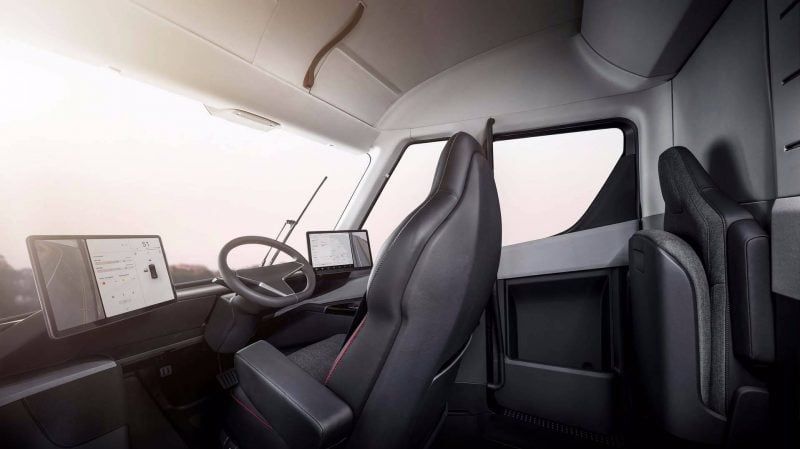
The tone has changed this week: In a video published on YouTube, Tesla announces that semi series production will start fully by 2026with an annual targeted capacity of 50,000 units. An ambitious figure which, if reached, could position Tesla as a major player in electric heavy transport. Because while Tesla flies her weapons, other manufacturers like Volvo Trucks or Mercedes have already started to deliver their electric heavyweights. By way of comparison, Volvo has recorded 5,000 sales of electric trucks this week since the launch of the first model in 2019.
-The arrival of the semi tesla could in any case be a breath of fresh air for companies having placed several years ago, Sometimes constrained in the meantime to turn to competition. The Freightliner Ecascadia, an electric truck of the Daimler Truck group, took advantage of these delays to win on the American market for example companies like Schneider National already use nearly 100 ECASCADIA for the transport of Froto-Lay products, while UPS, Sysco and Walmart Canada also operate several dozen.
Solid performance, but several uncertainties remain
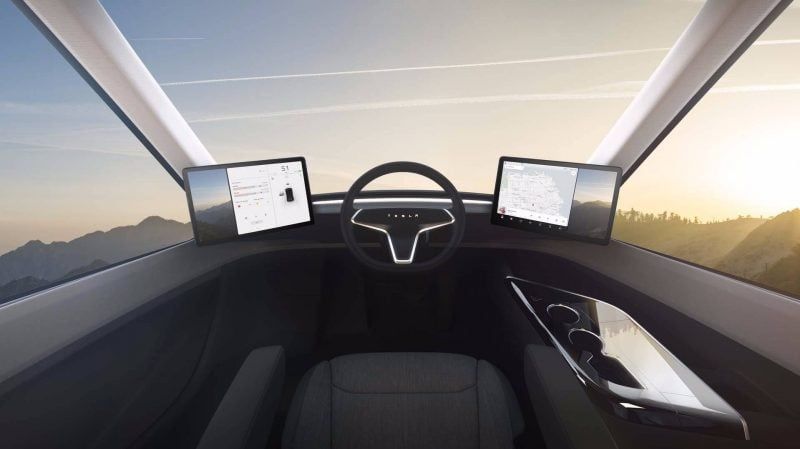
From a technical point of view, The semi tesla retains a notable advantage: it promises an autonomy of around 800 kilometers with a single load, twice that of the Freightliner Ecascadia. But the immediate availability of the latter has weighed in the balance, with more than 55 companies having already integrated the ECASCADIA into their fleet.
The price of the semi could also become a point of friction. Initially announced at $ 150,000 for the 480 km of autonomy version, and $ 180,000 for the 800 km, Tesla has not confirmed if these prices will be maintained on an industrial scale. Ryder, one of the first semi customers, recently reduced his order from 42 to 18 units, evoking a “dramatic” price increase and a delivery date now pushed back to the end of 2026.
It remains to be seen whether Tesla will finally make her commitments, or if the semi will experience a destiny similar to that of the roadster, announced as “imminent” for years, without realization. If limited deliveries and tests in real conditions are encouraging, the real challenge remains mass production, at a competitive and lasting price.

